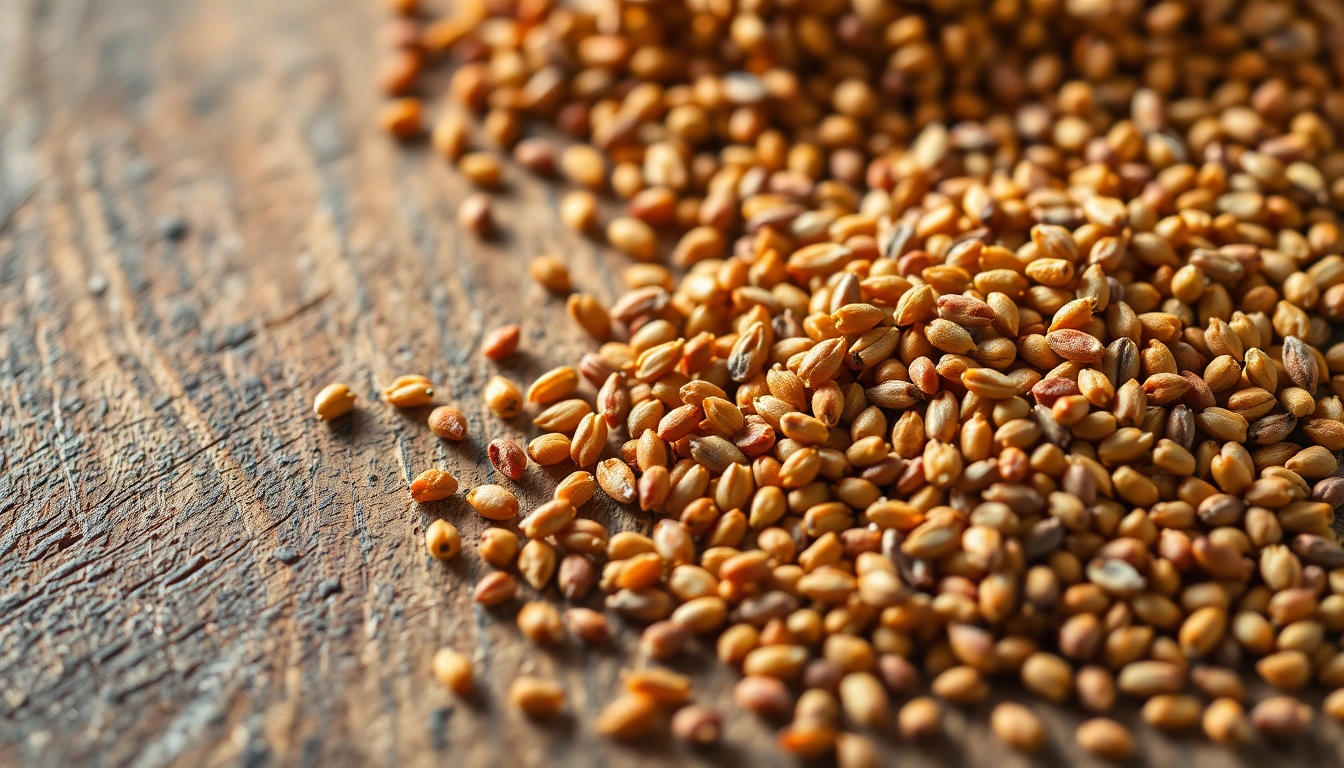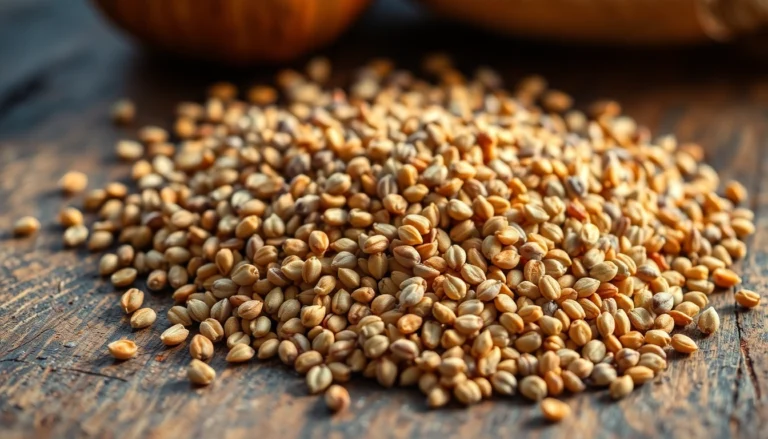Harnessing the Power of Cumin Seeds: A Comprehensive Guide for Culinary Excellence and Export Success
Cumin seeds have long been revered as a cornerstone of global cuisine, prized for their distinctive aroma, rich flavor, and versatile culinary applications. As a prominent manufacturer and exporter of premium spices, Spice Nest takes pride in offering authentic, high-quality cumin seeds that meet international standards and cater to diverse gastronomic needs. For those looking to elevate their cooking or venture into the lucrative export market, understanding the nuances of cumin seeds—from selection and storage to market trends—is essential. This guide aims to provide an in-depth exploration of cumin seeds, encompassing varieties, quality indicators, health benefits, sourcing strategies, storage practices, culinary tips, and export insights, all tailored to empower you in achieving culinary excellence and business growth.
Understanding Cumin Seeds: Types, Quality, and Benefits
Different Varieties of Cumin Seeds and Their Culinary Uses
Cumin seeds come in several varieties, each with unique characteristics suited to specific culinary applications. The most common types include ground cumin, black cumin (Kala Jeep), and green cumin. Ground cumin is the most widely used across cuisines, especially in spice blends like garam masala and curry powders. Black cumin, with its slightly bitter and more intense flavor, is popular in Middle Eastern and North African dishes, utilized in bread, salads, and stews. Green cumin, less common but fragrant, is often used in salads and garnishes in North Indian and Persian cuisines.
Matching the right cumin variety with the intended dish enhances flavor profiles and authenticity. For example, India’s iconic spice blends rely heavily on ground cumin for its earthy aroma, while Mediterranean recipes benefit from black cumin’s robust flavor. As a top Cumin Seeds manufacturer, Spice Nest offers a broad range of these varieties, ensuring quality, freshness, and consistency for both culinary and commercial uses.
Indicators of High-Quality Cumin Seeds for Optimal Flavor
Quality cumin seeds have distinct visual and sensory cues. Premium seeds are uniform in size, with a light brown or tan color and a smooth, shiny surface that indicates freshness. They exhibit a strong aromatic profile—rich, earthy, and slightly nutty—without mustiness or off-odors. High-quality seeds are also free from debris, stones, and insect damage.
Other indicators include aroma intensity and oil content; seeds with higher oil content tend to be more fragrant and flavorful. Certified quality standards, such as ISO, HACCP, and Organic certifications, add confidence to buyers. As a trusted exporter, Spice Nest ensures stringent quality checks, from sourcing to packaging, to deliver cumin seeds that meet international expectations for flavor, purity, and safety.
Health Benefits and Nutritional Value of Cumin Seeds
Cumin seeds are not just a flavor enhancer; they are also a powerhouse of health benefits. Rich in iron, magnesium, calcium, and antioxidants, cumin promotes digestion, boosts immunity, and may aid in managing blood sugar levels. Their anti-inflammatory properties can reduce inflammation and improve metabolic health.
Studies have shown that cumin’s bioactive compounds, such as cuminaldehyde, enhance gut health, stimulate appetite, and possess antimicrobial effects. Incorporating cumin into daily diets can be a simple yet effective strategy for improving overall wellness. As a manufacturer committed to health-conscious products, Spice Nest ensures that our cumin seeds retain maximum nutritional value, contributing to both culinary delight and health benefits.
How to Select the Best Cumin Seeds for Cooking and Export
Key Factors to Consider When Purchasing Cumin Seeds
Choosing the finest cumin seeds involves evaluating several critical factors. First, prioritize aroma and flavor profile, which indicate freshness. Second, assess the physical attributes—uniform size, color consistency, and absence of impurities. Third, consider moisture content; low moisture levels prevent mold and prolong shelf life.
Importantly, source cumin seeds from certified suppliers who follow quality standards and provide transparent documentation. Look for HACCP, ISO, and organic certifications, especially when targeting export markets with strict regulations. Cultivars or varieties also influence how well cumin performs in different dishes or markets, so select accordingly based on your culinary or commercial focus.
Prices, Sourcing, and Certifications for Quality Assurance
Pricing is often reflective of quality, origin, and certification. Premium cumin seeds attract higher prices but also command better margins in both domestic and international markets. Sourcing from reputed manufacturers like Spice Nest guarantees authenticity and consistent supply. Certifications such as Organic, Fair Trade, and International Food Safety standards assure buyers of product integrity and compliance with export regulations.
Establishing long-term relationships with reliable exporters ensures quality, competitive pricing, and timely delivery, all crucial for building brand reputation and customer satisfaction.
Trusted Suppliers and Exporters of Authentic Cumin Seeds
India stands as the world’s leading producer and exporter of cumin seeds, with states like Rajasthan, Gujarat, and Uttar Pradesh at the forefront. Reputed exporters like Spice Nest possess extensive experience, advanced processing facilities, and compliance with international standards. Choosing trusted suppliers involves verifying their accreditation, production capacity, and ability to provide bespoke packaging and certifications to meet specific market needs.
Proper Storage and Preservation of Cumin Seeds
Best Practices for Storing Cumin Seeds to Maintain Freshness
Proper storage preserves cumin seeds’ aroma, flavor, and nutritional qualities. Store seeds in airtight, moisture-proof containers, preferably in a cool, dark, and dry environment. Materials like glass jars, stainless steel cans, or vacuum-sealed packs are ideal. Avoid exposure to direct sunlight, humidity, and temperature fluctuations, which accelerate degradation.
Implementing climate-controlled storage facilities helps maintain product quality, especially for large quantities destined for export or bulk sale. Regularly inspecting stored cumin for signs of spoilage, pests, or moisture intrusion ensures quality continuity.
Common Mistakes That Reduce Cumin Seed Quality
Mistakes such as improper packaging, prolonged exposure to air, moisture, and heat, or contamination during handling can significantly diminish cumin quality. Using unsealed or low-quality packaging leads to aroma loss and susceptibility to pests and mold. Overhandling or mishandling during transport can cause physical damage to seeds, affecting appearance and processing quality.
Educating staff on correct handling and investing in advanced packaging solutions, such as vacuum sealing or nitrogen flushing, can mitigate these issues, ensuring premium quality for both domestic consumption and export markets.
Innovative Packaging Solutions for Export and Retail
To meet international standards and consumer expectations, innovative packaging like hermetically sealed pouches, biodegradable bags, and sealed tin containers are increasingly popular. These options enhance shelf life, preserve aroma, and comply with environmental regulations. Labeling with clear information on origin, certifications, and best-before dates builds trust and brand recognition.
Incorporating Cumin Seeds in Culinary Creations
Popular Recipes Highlighting Cumin Seeds’ Flavor
Cumin seeds are integral to countless dishes worldwide. In Indian cuisine, they feature in dals, curries, and spice blends like garam masala. Middle Eastern dishes utilize roasted black cumin in kebabs and bread. Mexican salsas and spice mixes also rely heavily on ground cumin for depth of flavor.
For example, preparing a traditional Indian *jeera rice* requires lightly frying cumin seeds in ghee or oil, then adding cooked basmati rice for an aromatic finish. Cumin also enhances roasted vegetables, lentil soups, and savory stews, imparting warmth and complexity.
Tips for Grinding and Enhancing Aroma in Dishes
Grinding cumin seeds fresh just before use maximizes aroma and flavor. Use a mortar and pestle or spice grinder; avoid pre-ground powders that may lose potency over time. Toasting seeds lightly before grinding enhances their nutty aroma, infusing dishes with a richer flavor profile.
Sealing ground cumin in airtight containers prevents flavor loss, ensuring that each addition to your dish retains its full aromatic potential.
Using Cumin Seeds in Spice Blends and Masalas
Cumin forms the backbone of many spice blends, such as *garam masala*, *chili powder*, and *curry powders*. Its warm, earthy notes balance other spices like coriander, turmeric, and cardamom. Mastery of blending techniques involves understanding flavor pairings, ratios, and roasting methods to develop signature masalas that elevate culinary creations.
Market Trends and Export Opportunities for Cumin Seeds
Global Demand for Premium Cumin Seeds
The international spice market continues to grow, driven by increasing consumer awareness of health benefits and culinary globalization. Premium quality cumin seeds are highly sought-after in Europe, North America, Middle East, and Asia, especially organic and certified varieties. According to market research, the demand for organic and sustainably sourced cumin seeds is projected to increase at a CAGR of over 7% in the next five years.
Emerging Markets and Export Strategies
Emerging markets in Africa, Southeast Asia, and the Middle East offer promising opportunities. Strategies include focusing on quality certifications, establishing direct trade relationships, and adhering to international standards like ISO 22000 and Organic certifications. Participating in global food expos and trade fairs, such as Biofach, enhances visibility and credibility.
Building robust supply chains, leveraging e-commerce for bulk orders, and offering customized packaging are effective methods to penetrate these markets. Marketing narratives emphasizing purity, traceability, and health benefits resonate well with international buyers.
Quality Standards and Certifications for International Trade
Compliance with international food safety and quality standards is non-negotiable for export success. Certifications such as HACCP, ISO, Organic, and Fair Trade underpin trust and meet regulatory requirements. Exporters should also stay updated on regional import regulations, pesticide residue limits, and labeling standards.
Adopting transparency and traceability practices not only facilitates compliance but also enhances brand value. Spice Nest’s certification-backed processes exemplify best practices that exporters can emulate to ensure consistent quality and customer satisfaction.





